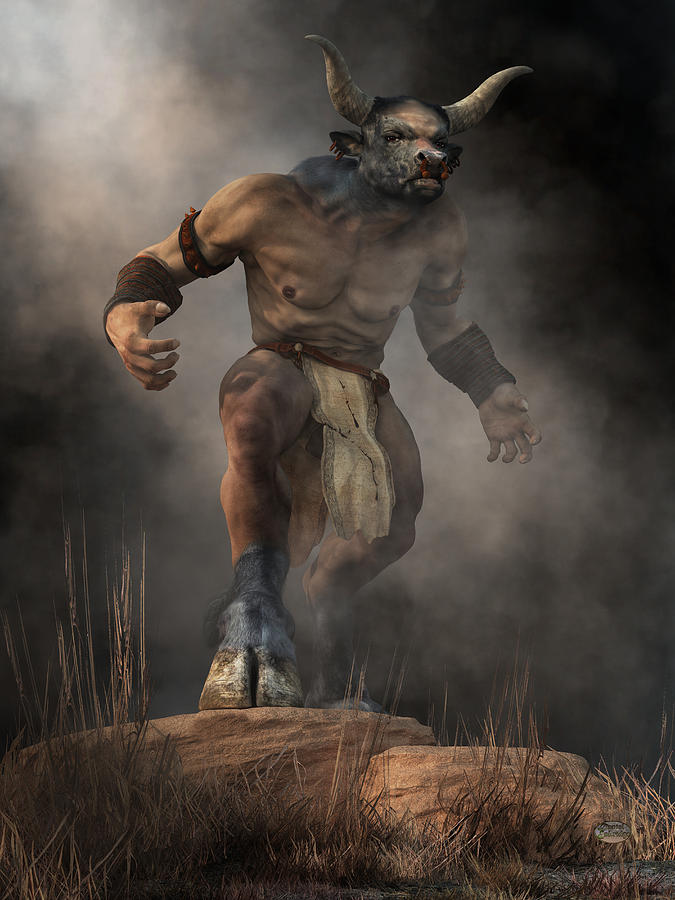In my new book Immortal Combat-Confronting the Heart of Darkness I have used mythological beasts to symbolize the depth of darkness in our world. The point of the book is to explain what we mean by “the Sin of the World” so that we can then see why the cross was the only answer.
Dante is wise to place the various mythical monsters in hell because they symbolize the monsters in the underworld of our own human personalities and human society. These beasts are like something out of nightmares, and rightly so because they inhabit the twilight world, not only of hell but also of our subconscious.
They come from the realm of the dark–the underground–the caves–the desert places of our mind where the wild things are, and this is where the “Sin of the World” originates. Myth was the method whereby those depths of the unconscious are unlocked and imagination is the key.
One of the most fascinating myths is that of the Minotaur. You can read more about it here if you are unfamiliar with the story.
The Minotaur was half bull, half huge and powerful man. The various mythic adventures about him and how Theseus defeated him are of secondary interest. What interests me is the symbolism of the myth.
The Bull-Man is just what it looks like–a frighteningly powerful beast from hell. Like a bull he is powerful, unpredictable, hot blooded and stubborn. Not only immensely powerful, but the Minotaur is hidden– locked in the underground labyrinth beneath the palace of the king. The palace of the king is beautiful, respectable, wealthy, powerful and pleasurable. The palace contains all that seems attractive and delightful about life, but locked in a labyrinth beneath the palace lurks the minotaur…and notice that the minotaur dwells below the palace of the King who is named Minos. “Taur” means “bull” so the minotaur is the dark and bestial shadow side of the king himself.
In the book I am developing, Minotaur stands for the underground evil–the lurking, potent force in the subterranean passageways of our lives. Beneath the shining successful surface of the palaces we create for ourselves, the Minotaur roams and roars.
What is this monster in our lives? It is the stubborn, unpredictable, chthonic urges rumbling below like a dormant volcano. This beast roams at will within the labyrinth of our underground lives. It is there that our kinship with Cain wanders about seeking whom he may devour.
Without redemption, the Minotaur dwells beneath our silken palaces and our shining exteriors.
Out of the darkness of the labyrinth the man speaks.
To defeat this underground monster of the dark we need the courage and cunning of Theseus whose name reminds us of “Jesus” which means “Savior”.
The Minotaur is all that is secret, dark and deep. He is the Balrog in the depths of Moira, and Lent is the time when we should be gathering our courage to face the foe, and it is Christ the true King who comes to enter into that subterranean realm to do battle and defeat him once and for all.
Go here to purchase your copy of Immortal Combat. If you would like me to sign it, mention that in the purchase process.







Ordered this book along with Spiritual Warfare…looking forward to getting them and beginning the read process.